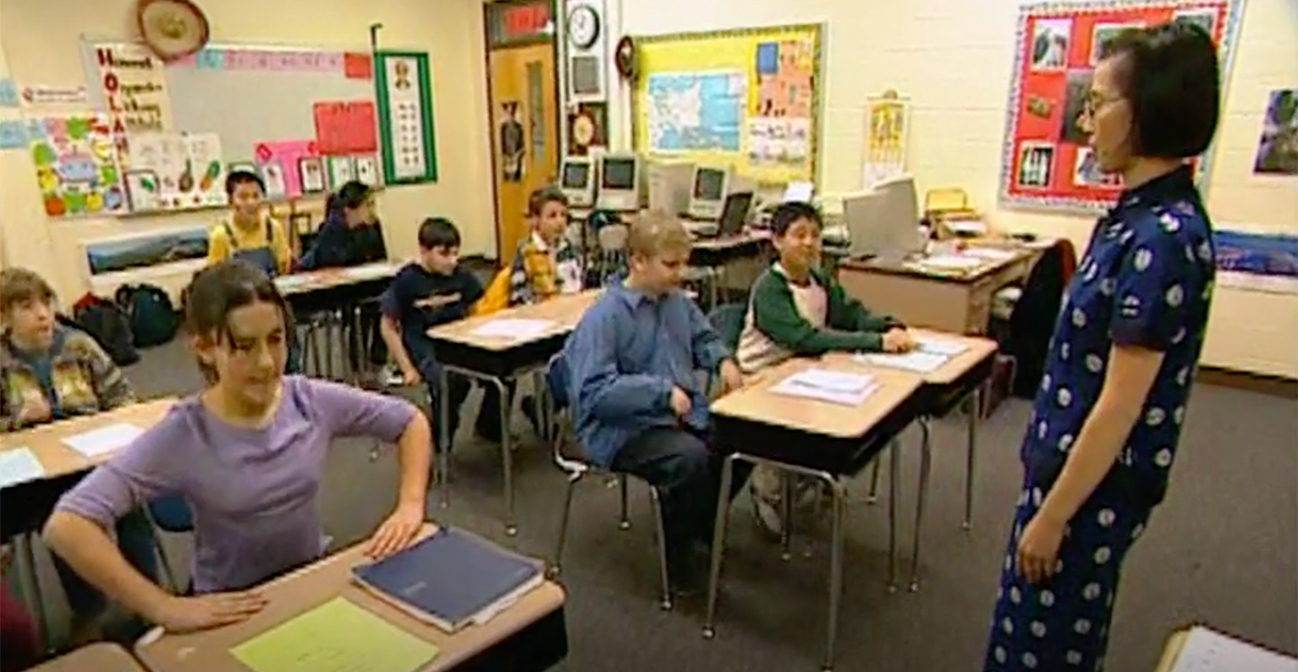Join us for conversations that inspire, recognize, and encourage innovation and best practices in the education profession.
Available on Apple Podcasts, Spotify, Google Podcasts, and more.

CLASSROOM AT A GLANCE
Teacher
Haiyan Fu
Language
Mandarin Chinese II-IV
Grades
9-12
School
Northside College Preparatory High School, Chicago, Illinois
Lesson Date
January 15
Class Size
19
Schedule
Block schedule, 96 minutes twice a week
In this lesson, students in Chinese II-IV work on the theme “directions.” The class begins by reviewing the previous day’s vocabulary, then practices writing characters. Next, Chinese II and Chinese III students work together in groups: The Chinese III students in each group describe local restaurants to prepare for a restaurant review project, while the Chinese II students use a map to practice giving directions to the restaurants. Meanwhile, Chinese IV students prepare and present a dramatic interpretation of two poems to the class. Finally, the whole class reads and interprets a portion of a poem that contains “directions” vocabulary, and then watches a filmed, musical performance of the poem.
Communication: Interpersonal, Interpretive, Presentational
Cultures: Making Connections, Acquiring Information
authentic materials
Authentic materials are resources that have been developed specifically for native speakers. These include print, audio, and visual materials.
character dictation
A character language such as Chinese does not use an alphabet for sound/symbol correspondence, but rather integrates both meaning and pronunciation in its characters. Character dictation can be used to build character recognition and sound/symbol correspondence. The teacher or a student dictates characters to the class to build familiarity with individual characters’ meaning and to practice creating sentences in various contexts.
heritage speaker
A heritage speaker is a student who is exposed to a language other than English at home. Heritage speakers can be categorized based on the prominence and development of the heritage language in the student’s daily life. Some students have full oral fluency and literacy in the home language; others may have full oral fluency but their written literacy was not developed because they were schooled in English. Another group of students — typically third- or fourth-generation — can speak to a limited degree but cannot express themselves on a wide range of topics. Students from any of these categories may also have gaps in knowledge about their cultural heritage. Teachers who have heritage speakers of the target language in their class should assess which proficiencies need to be maintained and which need to be developed further. See also native speaker.
proficiency level
Proficiency describes how well a person functions in a language. The American Council on the Teaching of Foreign Languages further defines proficiency with a set of guidelines for assessing communicative abilities. The guidelines cover how an individual performs across three criteria: function, content/context, and accuracy. When combined, these criteria determine the student’s communicative ability to be Novice, Intermediate, Advanced, or Superior. See also performance level.
spiraling
Spiraling is the process of teaching a theme or language rule to different levels of learners by creating multiple tasks that are increasingly complex. For example, a lesson on weather can be spiraled as follows: (1) Novice students can describe the weather in short formulaic sentences; (2) Intermediate students can talk about the weather and its effect on their activities, or gather information from broadcasts or newspapers; and (3) Pre-Advanced students can tell a story about a frightening weather-related event or follow a description of weather in a literary piece.
Reflect on Your Practice
As you reflect on these questions, write down your responses or discuss them as a group.
Watch Other Videos
Watch other videos in the Teaching Foreign Languages K-12 library for more examples of teaching methodologies like those you’ve just seen. Note: All videos in this series are subtitled in English.
Interpreting Literature (Spanish) and Interpreting La Belle et la Bête(French) show students interpreting a cultural work — a story and a film respectively.
Put It Into Practice
Try these ideas in your classroom. Where it’s not already evident, reflect on how to adapt an idea that targets one performance range for application to other performance ranges.
World-Readiness Standards for Learning Languages
The World-Readiness Standards for Learning Languages create a roadmap to guide learners to develop competence to communicate effectively and interact with cultural understanding. This lesson correlates to the following Standards:
Interpersonal Communication
Interpretive Communication
Presentational Communication
Relating Cultural Practices to Perspectives
Relating Cultural Products to Perspectives
Making Connections
Acquiring Information and Diverse Perspectives